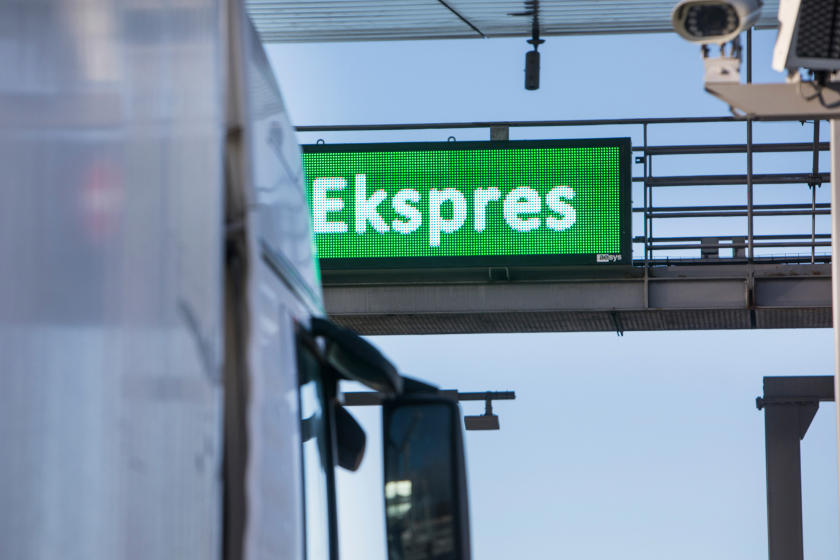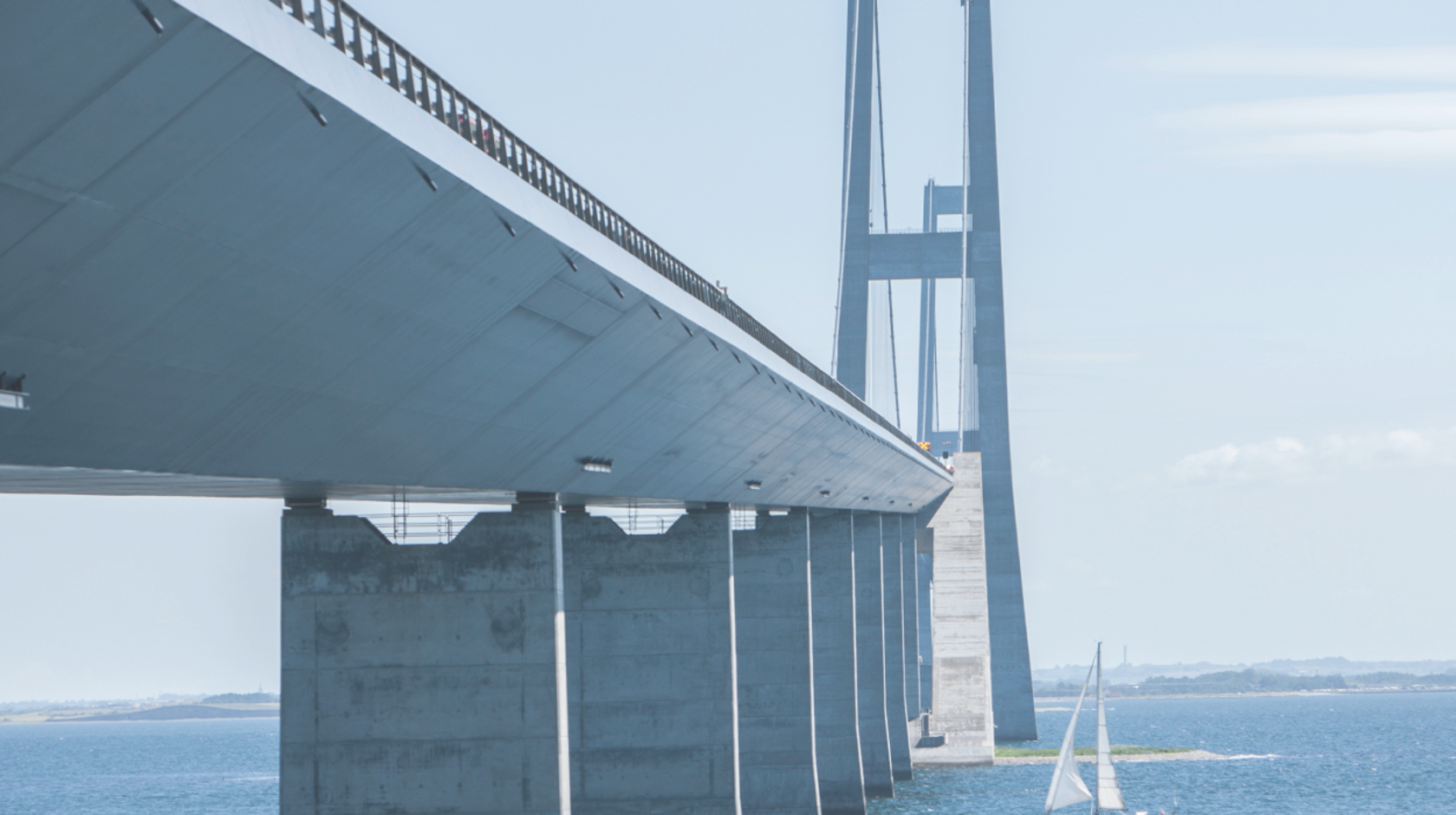

The fixed crossing
Construction work on the Storebælt crossing took place between 1988 and 1998. The motorway across the Storebælt opened on 14 June 1998, while the railway opened the year before on 1 June 1997.
The total construction cost for the entire Storebælt project amounted to DKK 21.4 billion at 1988 prices. The costs are attributed largely equally between the road and the railway crossing. To cover the cost of construction, A/S Storebælt took out loans in Danish and international capital markets.
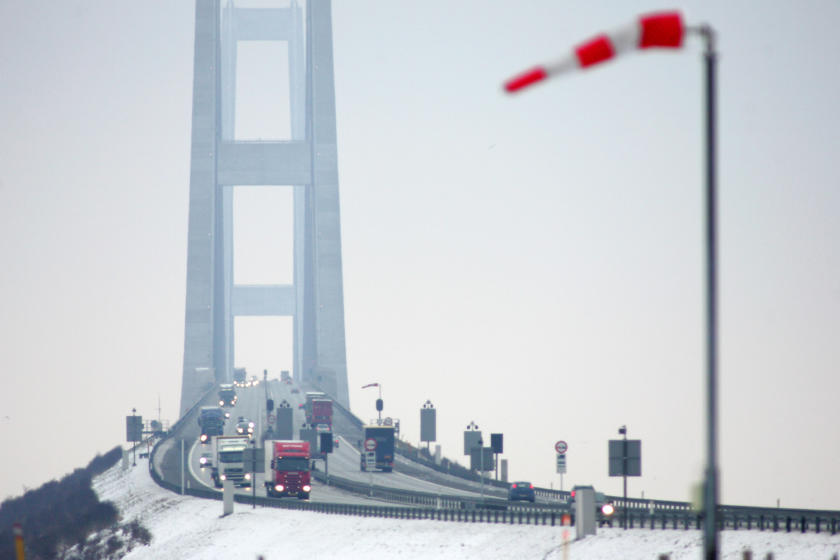
Facts about the bridge
The east bridge between Zealand and Sprogø is 6,790 metres long. The passage height is 65 metres.
The east tunnel for train traffic was built between 1988 and 1996 and is 8,024 metres long.
The west bridge was built between 1989 and 1994. It is 6,611 metres long with a passage height of 18 metres.
Facts about the pylons and anchor blocks
At 254 metres tall, the pylons are among the highest points in Denmark. The foundation boxes were cast at a factory in Kalundborg and shipped 70 kilometres to the bridge site.
Each foundation box weighs 32,000 tonnes and is placed on a stone pad to ensure a stable base.
The rest of the pylons were cast on site, four metres at a time, using climbing formwork to keep the concrete dry while it hardened.
The east bridge’s anchor blocks have the task of anchoring the extreme forces of the main cables. Each anchor block weighs a lot in itself. On top of this is ballast of sand and iron ore resulting in a total weight of 325,000 tonnes.
The main cables are attached inside the anchor blocks. Each cable is made up of 37 wire bundles anchored to the based of the anchor block. Each anchor block is around 63 metres tall.
Facts about the bridge pillars and moorings
The east bridge’s moorings and the first pillar were cast on site due to the shallow water depth. The other pillars were prefabricated and shipped out to the bridge site.
There are a total of 19 pillars, consisting of 12 between Zealand and the eastern anchor block, and seven between Fyn and the western anchor block. A bridge pillar weighs an average of 6,000 tonnes. The suspension bridge is held in place by two 83-centimetre thick and 3-kilometre long cables.
Facts about the cables
The road is supported by two parallel cables that run from one anchor block over the top of the two pylons to the other anchor block.
The cables are each around 3-kilometres long and 83 centimetres in diameter. Each cable consists of a large number of 5.38 mm wires, with 18,648 wires in each cable. Steel wire is wrapped around them to hold them together. They are then treated to prevent rust.
In 2014, Storebælt began installing a dehumidification system on the main cables to keep them in good condition. The dehumidification system was completed in September 2015.
The dehumidifier blows dry air through the main cables, removing any moisture.
To ensure that the dehumidified air can flow from the inlet to the outlet sleeves, the main cable is made airtight by wrapping it with reinforced elastomer (CableguardTM) and sealing around the cable clamps.
East bridge
The east bridge between Zealand and Sprogø is 6,790 metres long and consists of a substructure and a superstructure. The concrete substructure consists of pylons, anchor blocks, pillars, and moorings. The steel superstructure consists of bridge sections and cables.
The actual suspension bridge between the two anchor blocks is around 2,700 metres long. The suspension bridge consists of the 1,624-metre free span between the two pylons plus the two 535-metre side spans between the pylons and anchor blocks. The suspension bridge has 23 connection points, made up of 14 from Zealand and nine from Sprogø.
Storebælt’s eastern end, which the east bridge spans, is in international waters. The passage height is 65 metres.
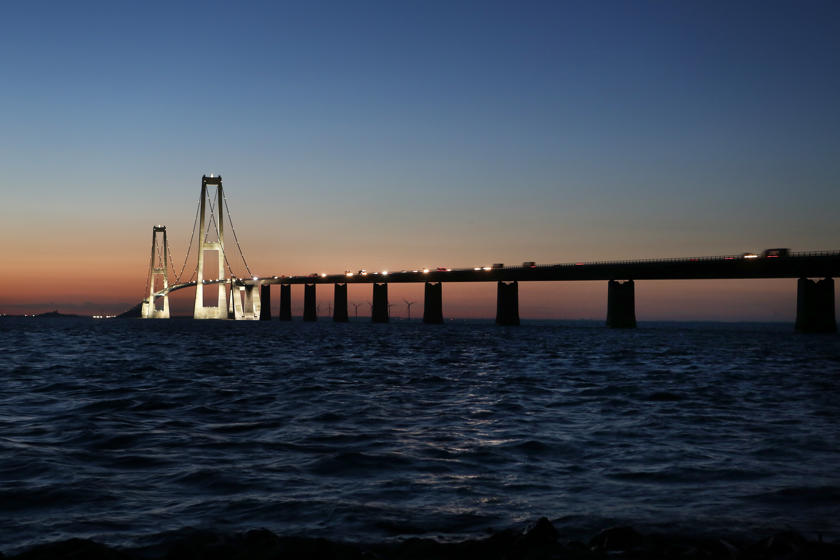
East tunnel
The east tunnel for train traffic was built between 1988 and 1996. The tunnel is 8,024 metres long and consists of two separate tunnels with one track in each. The two tunnels are connected by way of 31 transverse tunnels that serve as escape routes and also house important systems.
The east tunnel is a bored tunnel. Four boring machines were specially made for this task, boring in each direction for each tunnel to then meet in the middle. The 40-centimetre thick tunnel wall consists of a total of 62,500 concrete elements bolted together. The elements were manufactured at a temporary factory in Halsskov.
There is between 12 and 40 metres between the top of the tunnel and the seabed. At its deepest, the tunnel is 75 metres below sea level.
West bridge
The west bridge was built between 1989 and 1994. Here there are two parallel bridges – one for road traffic, and one for the railway. It is 6,611 metres long with a passage height of 18 metres.
Both the substructure and the superstructure of the bridge were made from concrete at a factory in Lindholm, Fyn. The elements were shipped to the bridge site by the Svanen floating crane.
Sprogø
Sprogø, in the middle of the Storebælt, is a 154 hectare island linking the bridges and tunnels. The island was expanded in connection with the crossing’s construction and is now around four times larger than before the Storebælt Bridge was built.
The original Sprogø is a nature reserve, as is an area north of the railway on the new part of Sprogø. The entire island is also a Natura 2000 area (no. 116), with special consideration given to the common eider, sandwich tern, and dwarf’s tern. The island is rich in wildlife in general, and is home to the rare green-spotted toad in addition to many species of birds.
From 1922 to 1961, the main buildings on the island housed a “girls’ home”, where young women were brought if they fell pregnant outside of marriage or otherwise did not fit with the norms of the time. Today, Sprogø is uninhabited.
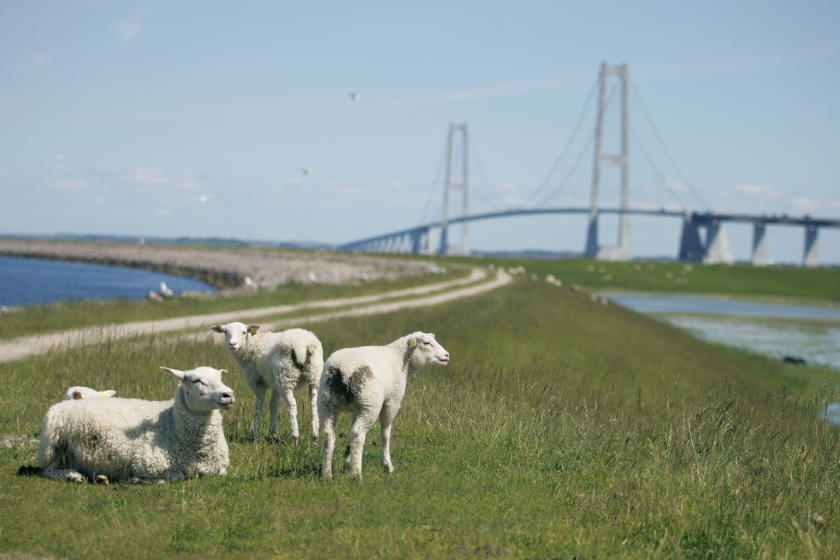
Toll booth
The toll booth is located immediately east of the bridge. Coming from Zealand, it’s the first thing you meet. Coming from Fyn, it’s of course the last thing you meet. The toll booth has 13 lanes westbound and 11 lanes eastbound.
